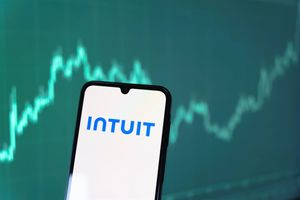
In a financial landscape marked by persistent uncertainty and evolving macroeconomic dynamics, gold has re-emerged as a pivotal strategic asset for both retail and institutional investors. With prices reaching unprecedented highs, surpassing $3,700 per ounce in 2025 and eyeing the $4,000 mark, the precious metal's traditional roles as a safe haven and inflation hedge have been significantly reinforced. This robust performance is not merely a fleeting trend but a reflection of deep-seated shifts in global economics and geopolitics, prompting investors to critically re-evaluate their portfolio allocations and risk management strategies.
The current bullish momentum underscores gold's enduring appeal in an environment characterized by elevated inflation, shifting monetary policies, and geopolitical tensions. As central banks worldwide continue their significant gold accumulation and a dovish tilt in monetary policy takes hold, understanding gold's market drivers and its strategic place in a diversified portfolio has become more critical than ever. Investors must navigate this complex terrain by assessing their individual risk tolerance and diligently monitoring key market indicators to harness gold's potential benefits while mitigating its inherent volatilities.
Gold's Resurgence: A Response to a Changing World
Gold's recent climb to record valuations is a direct consequence of a confluence of powerful global forces. Over the past year, gold has distinguished itself as the best-performing major asset, achieving multiple record peaks and solidifying its role as a fundamental pillar of financial resilience. Momentum indicators, while suggesting overbought conditions, are underpinned by strong support levels, indicating sustained buyer interest. Major financial institutions, including J.P. Morgan, Goldman Sachs, Bank of America, and UBS, have issued increasingly bullish forecasts, projecting average prices between $3,500/oz and $3,700/oz by Q4 2025, with some analysts envisioning a path towards $4,000 by mid-2026 and even $5,000 in a more aggressive bull scenario.
The timeline leading to this moment is multifaceted: persistent global inflation, elevated above pre-2020 levels, has heightened gold's appeal as a store of value. Simultaneously, a series of geopolitical events—ranging from conflicts in Eastern Europe to U.S.-China trade frictions—have underscored gold's traditional safe-haven status. Central banks, particularly in emerging markets like China, India, and Turkey, have been robust net buyers of gold for over a decade, signaling a strategic shift away from U.S. dollar dominance and providing a strong floor for gold prices. The anticipated interest rate cuts by the Federal Reserve and other central banks further reduce the opportunity cost of holding non-yielding gold, enhancing its attractiveness. These dynamics collectively portray a market where gold's intrinsic value and hedging capabilities are increasingly prized by a broad spectrum of market participants.
Golden Opportunities and Cautious Paths: Identifying Winners and Losers
The surge in gold prices creates a clear divide between beneficiaries and those facing headwinds across various industries. Companies directly involved in the extraction, production, and financing of gold stand to gain significantly, while those reliant on gold as a raw material may see their profit margins squeezed.
The Winners: Gold Producers and Royalty Companies
Gold mining companies and those in the gold royalty and streaming sectors are the primary beneficiaries of a rising gold market. When gold prices climb, these companies experience increased revenue from their output, and given relatively stable production costs, their profit margins expand substantially. This often translates to amplified stock performance, frequently outpacing the percentage gain in gold itself.
Among the key players benefiting are:
- Newmont Corporation (NYSE: NEM): As one of the world's largest gold producers, its profitability is highly sensitive to price movements.
- Barrick Gold Corporation (NYSE: GOLD): A major global gold and copper miner with extensive operations.
- Agnico Eagle Mines Limited (NYSE: AEM): A Canadian senior gold miner that sees enhanced returns from higher gold prices.
- AngloGold Ashanti PLC (NYSE: AU): A leading international gold producer gaining from a favorable gold price environment.
- Kinross Gold Corporation (TSX: K): This Canadian-based senior gold mining company experiences improved financial performance with rising gold values.
- Wheaton Precious Metals Corp. (NYSE: WPM): A streaming company, directly benefits as higher gold prices increase the value of its agreements.
- Franco-Nevada Corp. (TSX: FNV): A gold-focused royalty and streaming company, profiting without incurring direct mining operational costs.
These companies, by virtue of their direct exposure to the commodity, are well-positioned to capitalize on the sustained bullish sentiment in the gold market.
The Losers: Jewelers and Gold-Dependent Manufacturers
Conversely, industries that rely heavily on gold as a core raw material typically face challenges when prices escalate. Increased input costs can erode profit margins, especially if companies cannot fully pass these costs onto consumers. High gold prices can also dampen consumer demand for gold-intensive products, making them less affordable.
Prominent examples include:
- Titan Company Limited (NSE: TITAN): A major player in the Indian jewelry market (e.g., Tanishq brand), faces reduced demand for new jewelry purchases.
- Kalyan Jewellers India Limited (NSE: KALYANKJIL): Another prominent Indian jewelry retailer that experiences similar pressures, often seeing consumers opt for lighter designs or exchange old gold to manage costs.
- Thangamayil Jewellery Ltd (NSE: THANGAMAYL): A regional jewelry chain, also susceptible to the impacts of elevated gold prices on consumer sentiment and sales volumes.
While the impact is most evident in the jewelry sector, certain high-tech manufacturing industries using gold for its electrical conductivity and corrosion resistance may also grapple with increased input costs. These companies must strategically manage their supply chains and pricing to mitigate the negative effects of a high-priced gold environment.
Gold's Enduring Influence: Broader Trends and Historical Echoes
Gold's recent market performance is not an isolated event but rather a reflection of broader industry trends and its deeply ingrained role within the global financial system. Its position as a premier safe-haven asset, an inflation hedge, and a portfolio diversifier is amplified during periods of economic and geopolitical flux.
Current industry trends reveal robust mine production reaching all-time highs in 2024, yet concerns about "peak gold" loom, suggesting future supply constraints could make recycling increasingly vital. Demand is globally diverse, with jewelry remaining the largest sector (44% in 2024), though high prices have shifted consumer behavior towards fewer, more valuable pieces. Investment demand surged by 25% in 2024, driven by inflation and instability, encompassing bars, coins, and ETFs. Crucially, central banks, particularly in emerging markets, continue to be significant net buyers, strategically diversifying their reserves. Gold's industrial demand in technology, especially in 5G and AI, also continues to grow, shifting the global demand profile eastward, with China and India accounting for over half of global consumption.
Gold's relationship with macroeconomic indicators is complex but generally well-defined. It typically exhibits an inverse relationship with real interest rates; when rates fall, the opportunity cost of holding non-yielding gold decreases, making it more attractive. However, this is not always absolute; gold reached all-time highs in December 2023 even amidst rising interest rates, suggesting other factors can override this correlation. As an inflation hedge, gold has historically preserved purchasing power during periods of high inflation, such as the 1970s. Geopolitical events are powerful drivers, with gold prices consistently surging during crises like the Gulf War, 9/11, the 2008 financial crisis, and the ongoing Russia-Ukraine conflict, as investors seek refuge.
Regulatory and policy implications also play a significant role. Post-2008 financial crisis regulations like Basel III have impacted how financial institutions treat gold holdings. Central bank coordination on gold policies, along with individual country measures like India's import tariffs, influence domestic prices and supply. International guidelines from bodies like the OECD and LBMA promote transparency and combat manipulation. Historically, gold's performance during similar conditions has been telling: a 2,329% gain during the high inflation of the 1970s and consistent safe-haven surges during every major geopolitical and economic crisis of the last few decades, reaffirming its unique and lasting significance.
The Road Ahead: Navigating Gold's Future Landscape
The future outlook for gold as an investment appears predominantly bullish, albeit with potential short-term volatilities. Both retail and institutional investors should consider strategic adaptations to their portfolios in anticipation of continued strength.
In the short-term (2025), gold prices are projected to remain robust, with forecasts ranging from $3,646 to $4,389 per ounce, averaging around $4,041. Expectations of further interest rate cuts by the U.S. Federal Reserve, dovish monetary policies, and ongoing geopolitical risks are significant drivers. Long-term (5-10 years and beyond), the outlook remains strong, with projections extending to $4,000 by mid-2026 and potentially reaching $4,500-$5,000/oz in the coming years, or even around $7,000 an ounce by 2030. This is underpinned by sustained central bank and investor demand, persistent economic uncertainty, gold's inflation-hedging capabilities, and potentially lower real interest rates.
Potential strategic pivots for investors include maintaining gold as a crucial component for portfolio diversification, with allocations typically ranging from 5-15%, or 10-20% for those with heightened concerns about monetary stability. Long-term holding is generally recommended, as gold tends to deliver more stable price increases over extended periods, especially in inflationary environments. Tactical buying during market corrections can also be an effective strategy. Investors should diligently monitor key indicators such as inflation reports, central bank policy announcements, the U.S. dollar's strength, and geopolitical developments. Investment avenues range from physical gold (bars, coins) to gold Exchange-Traded Funds (ETFs) and gold mining stocks, each offering distinct advantages and risks.
Emerging markets present both opportunities and challenges. Countries like China and India are pivotal to demand growth, driven by increasing wealth and cultural connections to gold. Central banks in emerging economies continue to diversify reserves with gold. However, challenges include political instability in some gold-producing regions, illegal mining, and regulatory inconsistencies.
Potential scenarios and outcomes include:
- Bullish Scenario: Persistent high inflation, aggressive central bank rate cuts, a weaker U.S. dollar, escalating geopolitical conflicts, and strong demand could see gold prices surge significantly, potentially surpassing $4,000 and advancing towards $7,000.
- Bearish Scenario: Global economic stabilization, hawkish central bank shifts, controlled inflation, a strengthening U.S. dollar, and de-escalation of major geopolitical tensions could lead to price decline or stagnation.
- Moderate/Rangebound Scenario: Modest economic growth, mixed signals on inflation/rates, and contained geopolitical risks could see gold remain rangebound with modest positive growth, continuing its role as a diversifier without dramatic swings.
A Golden Anchor in Turbulent Waters: Concluding Thoughts for Investors
The year 2025 has cemented gold's status as a vital component of a resilient investment portfolio. The precious metal's unprecedented rally, driven by robust central bank and investor demand, anticipated dovish monetary policies, and a climate of global uncertainty, underscores its enduring significance as a store of value and a hedge against systemic risks.
The key takeaways from the current gold market are clear: strong demand from both institutional and retail players, a supportive monetary policy environment with expected interest rate cuts, and persistent geopolitical and economic uncertainties all contribute to a sustained bullish outlook. While some minor overvaluation might be present, it is not considered substantial enough to derail the broader positive trajectory.
Moving forward, the market consensus points to continued growth, with gold prices projected to average $3,675/oz by Q4 2025 and potentially reach $4,000 by mid-2026, with even higher long-term forecasts. Gold's lasting impact lies in its fundamental properties: its ability to preserve purchasing power, its role as a safe haven during crises, and its low correlation with traditional assets, making it an excellent tool for portfolio diversification.
For investors, vigilance is paramount. Key indicators to monitor in the coming months include:
- Federal Reserve Policy and Interest Rates: The timing and magnitude of future rate adjustments, along with commentary from Fed officials, will be critical.
- Inflation Data: Closely watch the Personal Consumption Expenditure (PCE) Price Index for signs of persistent inflation, which could further support gold.
- Geopolitical Developments: Any escalation or de-escalation of global conflicts and trade tensions will continue to impact safe-haven demand.
- U.S. Dollar Performance: A weaker dollar typically makes gold more attractive to international buyers.
- Central Bank Activity: Observe the pace and volume of gold purchases by central banks, particularly in emerging markets.
- Economic Indicators: Broader economic trends such as employment data and growth rates will influence investor confidence.
- Investor Sentiment and Flows: Monitor futures positioning and gold ETF inflows for insights into market psychology.
In conclusion, gold's position in the current financial landscape is strong, supported by structural demand and macroeconomic tailwinds. While short-term fluctuations are inevitable, its enduring significance as a strategic asset for wealth preservation and portfolio stability makes it an indispensable consideration for any forward-looking investor.





